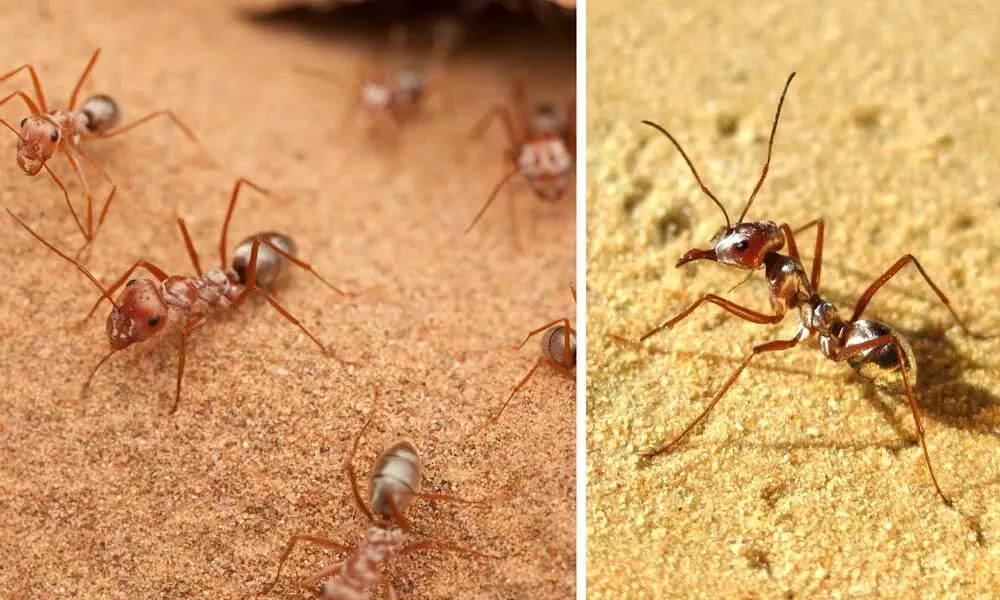The World's Fastest Ant Has Set A New World Record, Clocking 20 Times Usain Bolt's Top Speed

The World's Fastest Ant Has Set A New World Record, Clocking 20 Times Usain Bolt's Top Speed
According to the Journal of Experimental Biology, Northern Africa's Saharan silver ant was recently observed running at 855 mm per second
According to the Journal of Experimental Biology, Northern Africa's Saharan silver ant was recently observed running at 855 mm per second.
Although this may not seem to be a significant distance in actual terms – after all, the average man's walking stride is 762 mm (30 in) – the meaning becomes obvious when the size differential is considered.
It's hard to believe, but it makes Usain Bolt (JAM), the world's fastest guy, look positively extremely slow. During his world-record-breaking 100-meter sprint of 9.58 seconds in 2009, he reached 5.35 times his total height per second. During the study, swing rates of 1,200 mm (47.2 in) per second were calculated in their appendages. It makes the ants move at a rate of 47 strides per second, compared to Usain Bolt's four strides per second.
Scientists often use body lengths per second as a measure of relative speed. This fast-moving desert dweller has a top speed of 108 times its own body length per second.
By comparison, the fastest land mammal over short distances, the cheetah, achieves a "meagre" 16 body lengths per second when reaching its top speed of around 100 km/h. The ants' legs run at such a rapid pace that they are able to reach such incredible speeds.
Saharan silver ants have a legitimate reason to get from place To place as quickly as possible. Surface temperatures in the sand dunes where they live can hit unbearable highs of 70°C (159°F). This is made worse by the fact that they always go out during the hottest part of the day to scrounge for other small animals that have perished in the summer temperature. They only leave their underground nests for about 10 minutes at a time to avoid coming into contact with the blistering sand. Other steam characteristics include fine, triangular-shaped silver hairs that help to block the extreme sun's heat to enter and long legs that help to lift their bodies off the ground. Internally, special proteins help them adapt to a hot environment.
This ant is one of the most thermotolerant organisms on the planet, able to endure temperatures as high as 53°C (127°F) for short periods of time.
Dr. Kirsti Abbott of the School of Ants Australia, an ant ecologist who consults on myrmecological matters for Guinness World Records, said that this ant species' ability to harness the Sahara Desert's midday heat is proof of ants' ability to fill all ecological niches, both spatial and temporal. He further explained the variant specifications of the ants which makes them extraordinary. The nuances of this technique are fascinating the most. Shorter legs, but longer strides, and a tripod gait that's almost felt as though walking on air! The pace on the ground, as well as the silver hairs on its exoskeleton, are only two of the many excellent adaptations that make them ideal desert dwellers.
Meanwhile, Silver Saharan ants aren't the only creepy-crawlies that have beaten the odds and set a new world record. In terms of real and relative speed, Australian tiger beetles are faster than Saharan silver ants. Cicindela hudsoni, for example, has been measured at 2.5 m/s (9 km/h) (5.6 mph). Their speed gets faster while hunting but had to stop mid-chase to allow their eyes to "catch up" with their bodies.
Another Australian bug, the Australian dragonfly, takes home the gold medal in the air. In short bursts, it has been recorded hitting speeds of 58 km/h (36 mph), which is faster than the average galloping horse.
If needed, the Moroccan flic-flac spider can flee quickly, instead of running, it performs a sequence of flips and rolls (flic-flac refers to a typical circus tumbling act). With the aid of gravity on the slopes of its sand-dune habitat, the arachnid can reach 1.7 m/s, or 6.12 km/h (3.8 mph).
Another ant species found in the Southeast Asian and Australian rainforests is the ominously called Dracula ant can snap its jaws together at 90 m/s (324 km/h; 201 mph) – roughly 5,000 times faster than a blink of an eye.















